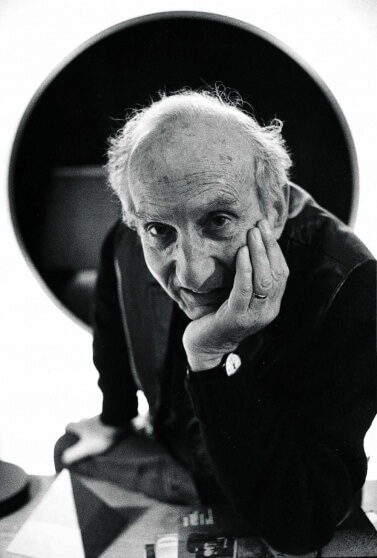Eugenio Carmi
Born in Genoa, 1920 and lives in Milan

Eugenio Carmi has been a leading exponent of Italian abstract art since the early 1950s. For two decades he devoted himself to Art Informel and, from the end of the 1960s onwards, he adopted the rigour of geometrical forms, which he gradually developed over the following decades. Although the majority of his works are paintings on canvas, his works on paper, those made with iron and tin plate, multiples and sculptures are also important. He made two kinetic works; it was thanks to one of these, SPCE, that he was invited to participate in the 33rd Venice Biennale in 1966. From 1956 to 1965 he was artistic consultant to the Italsider steelworks (located in Cornigliano, on the outskirts of Genoa) and in 1963 founded the Galleria del Deposito. A member of the Alliance Graphique International, he is still regarded as one of the innovators of the language of graphic arts in the 1950s and 1960s. Over the years, the daily constant of the painting he has produced in his studio has never been a purely personal matter. Always in contact with the world and other people — assistants or other artists and intellectuals of international standing — he has often played a leading role with the ability to catalyse talent. Eugenio Carmi has never ceased to intervene in the world: first of all with his art, also verbally with an active presence in international meetings and conferences and through teaching. His friendship and collaboration with Umberto Eco resulted in the creation of three fairy tales — subsequently translated into many different languages — and Stripsody, a work that owes its unique quality to the profound harmony in artistic and human terms between him, Eco and the American mezzo-soprano and composer Cathy Berberian. Over the years, Carmi has shown his works in numerous solo exhibitions in Italy and elsewhere. His works are to be found in collections of museums and institutions in Italy, Germany, the United Kingdom, Poland and the United States. Since 1971 he has lived in Milan. He describes himself as an ‘image-maker’.






